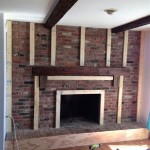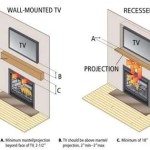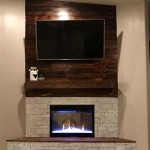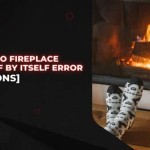Gas Fireplace Types: A Comprehensive Guide
Gas fireplaces offer a convenient and aesthetically pleasing alternative to traditional wood-burning fireplaces. They provide warmth and ambiance with the flick of a switch, eliminating the need for wood storage, chopping, and ash disposal. However, the selection of a gas fireplace can be overwhelming due to the variety of types available. Understanding the distinctions between these types is crucial for making an informed decision that suits individual needs and preferences.
This article aims to provide a comprehensive overview of different gas fireplace types, outlining their features, benefits, and limitations. This information will assist homeowners in navigating the market and selecting the most appropriate option for their homes.
Direct Vent Gas Fireplaces
Direct vent gas fireplaces are characterized by their sealed combustion system. They draw air from outside the home for combustion and vent exhaust gases directly outside through a coaxial pipe. This pipe consists of two concentric tubes, with the inner tube expelling exhaust and the outer tube drawing in fresh air. This sealed system offers significant advantages in terms of safety and efficiency.
The primary benefit of direct vent fireplaces lies in their safety. Because the combustion process is sealed from the interior of the home, there's minimal risk of carbon monoxide poisoning. The sealed system also prevents drafts and ensures that the fireplace doesn't compete with other appliances for air, contributing to improved energy efficiency. Direct vent fireplaces are typically more efficient than vent-free models, with efficiency ratings often exceeding 70%.
Installation flexibility is another advantage. Direct vent fireplaces can be vented horizontally through an exterior wall or vertically through the roof, providing greater options for placement within the home. They also offer a wide range of aesthetic styles, from contemporary linear designs to traditional log sets, allowing homeowners to match the fireplace to their existing décor.
However, direct vent fireplaces generally require professional installation due to the venting requirements. The cost of installation can be higher compared to vent-free models. The venting also needs to be visible on the exterior of the house, which might impact the aesthetic appeal. Despite these considerations, the safety and efficiency benefits often outweigh the drawbacks, making direct vent fireplaces a popular choice for many homeowners.
Vent-Free Gas Fireplaces (Also Known as Ventless)
Vent-free gas fireplaces, as the name suggests, do not require venting to the outside. They are designed to burn gas so completely that the amount of carbon monoxide produced is within acceptable safety limits. These fireplaces use room air for combustion and release the resulting gases directly into the home. This feature simplifies installation and provides greater flexibility in terms of placement.
The primary advantage of vent-free fireplaces is their ease of installation. Since no venting is required, they can be installed virtually anywhere in the home, as long as local building codes permit. This eliminates the need for costly and complex venting systems, making them a more affordable option in some cases. Vent-free fireplaces also boast high efficiency ratings, often approaching 99%, as virtually all the heat generated is released into the room.
Despite their advantages, vent-free fireplaces have certain limitations. They are subject to strict safety regulations and are often restricted or prohibited in certain jurisdictions. The combustion process releases water vapor into the air, which can contribute to humidity and potentially lead to mold growth if the home is not properly ventilated. Carbon monoxide sensors are essential when using vent-free fireplaces to ensure safety.
Furthermore, vent-free fireplaces can emit a slight odor during operation, although this is often minimized with proper maintenance and adherence to manufacturer guidelines. Due to the release of combustion byproducts into the room, some individuals may experience respiratory irritation. It’s crucial to ensure adequate ventilation when operating a vent-free fireplace and to exercise caution, especially for individuals with respiratory sensitivities.
B-Vent Gas Fireplaces (Natural Vent)
B-vent gas fireplaces, also known as natural vent fireplaces, represent a traditional venting system. They rely on natural convection to draw combustion air from the room and vent exhaust gases through a B-vent pipe, typically routed vertically through the roof. These fireplaces are generally less efficient and have lower safety ratings compared to direct vent models.
The primary advantage of B-vent fireplaces is their appearance. They often feature a more traditional fireplace design, resembling wood-burning units. They can be installed in existing masonry chimneys or with a dedicated B-vent pipe, offering some flexibility in terms of placement. The venting system is less visually obtrusive compared to direct vent systems, as it typically involves a single vertical pipe.
However, B-vent fireplaces have several drawbacks. They are typically less energy-efficient compared to direct vent and vent-free models, with efficiency ratings often ranging from 50% to 70%. They rely on room air for combustion, which can create drafts and lower the overall heating efficiency of the home. They are also more susceptible to backdrafting, where exhaust gases are drawn back into the home due to negative pressure or wind conditions. This poses a potential safety hazard.
Furthermore, B-vent fireplaces require a properly sized and maintained chimney or vent pipe to ensure safe and efficient operation. Regular inspections and cleaning are essential to prevent blockages and ensure proper draft. Due to their lower efficiency and safety concerns, B-vent fireplaces are becoming less common, with direct vent models offering a superior alternative in many situations.
Gas Fireplace Inserts
Gas fireplace inserts are designed to be installed within an existing masonry or factory-built wood-burning fireplace. They offer a convenient way to convert a traditional fireplace into a more efficient and convenient gas-fueled heating appliance. Inserts are typically enclosed units with a sealed combustion system, similar to direct vent fireplaces.
The primary advantage of gas fireplace inserts is that they utilize the existing fireplace structure, minimizing the need for extensive renovations. They offer a significant upgrade in terms of efficiency and safety compared to open wood-burning fireplaces. Inserts typically feature a blower fan that circulates heat into the room, providing more effective heating. They also eliminate the need for wood storage and ash disposal.
Installation of a gas fireplace insert typically requires professional assistance to ensure proper venting and gas line connections. The existing chimney must be inspected and lined with an appropriate vent pipe to ensure safe and efficient exhaust. Inserts are available in a variety of sizes and styles to fit different fireplace openings, allowing homeowners to customize the appearance to match their décor.
While gas fireplace inserts offer numerous benefits, they also have certain limitations. The size and shape of the existing fireplace opening can restrict the size and style of the insert that can be installed. The cost of installation can be significant, particularly if chimney modifications are required. However, the improved efficiency, convenience, and safety often make gas fireplace inserts a worthwhile investment for homeowners with existing fireplaces.
Gas Fireplace Stoves
Gas fireplace stoves resemble traditional wood-burning stoves in appearance but are fueled by natural gas or propane. They offer a freestanding heating solution that can be placed in virtually any room with a gas line and appropriate venting. Gas stoves provide both supplemental heat and a decorative focal point.
The primary advantage of gas fireplace stoves is their versatility. They can be installed in rooms without existing fireplaces, providing a convenient heating option where traditional fireplaces are not feasible. Gas stoves are available in a variety of styles, from traditional cast iron designs to contemporary models with clean lines and sleek finishes. They typically feature a realistic flame pattern and glowing embers, creating a cozy ambiance.
Gas stoves can be vented through a direct vent system or a B-vent system, depending on the model and installation requirements. Direct vent models offer greater flexibility in terms of placement, as they can be vented horizontally through an exterior wall. B-vent models require a vertical vent pipe, typically routed through the roof. Installation generally requires professional assistance to ensure proper gas line connections and venting.
Gas fireplace stoves offer a practical and aesthetically pleasing heating solution for many homes. They provide the warmth and ambiance of a traditional stove with the convenience of gas fuel. The choice between direct vent and B-vent models depends on the specific installation requirements and personal preferences. Regular maintenance, including cleaning and inspection, is essential to ensure safe and efficient operation.
.aspx?strip=all)
Types Of Gas Fireplaces Styles Venting Explained Regency

The Types Of Gas Fireplaces Gaithersburg Md Fireplace Service

Gas Fireplaces Chimney Sweep

12 Types Of Gas Fireplaces You Need To Know

4 Types Of Gas Fireplace Venting Options G B Energy

What You Need To Know About A Fireplace Chicagoland Chimney Restoration

12 Types Of Gas Fireplaces You Need To Know

What Type Of Fireplace Is Best For You

Diffe Types Of Fireplaces Compared Full Service Chimney

Design Guide Diffe Types Of Fireplaces Cr Construction Resources
Related Posts








